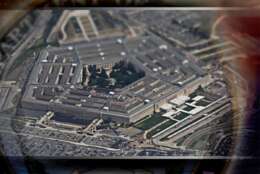Technology
-
Two big ticket federal cybersecurity initiatives took big steps forward this week, but their ultimate outcomes remain less than certain
July 26, 2023 -
‘As easy as possible’: OPM’s new tutorials aim to help retiring feds and improve customer experience
New video tutorials from the Office of Personnel Management lay out, step by step, a couple of key items on the federal retirement to-do list.
July 26, 2023 -
Emergency management teams currently deploy technologies like drones, sensors, robotics and cloud- based tools to improve preparation and response efforts. But these technologies do not fully possess the two key attributes that underpin all phases of emergency management: speed and the ability to account for limitless variables. Cutting-edge technology like quantum computing is uniquely capable of addressing these variables.
July 26, 2023 -
Congress authorized the creation of the Office of the National Cyber Director back in 2021, and the White House issued the National Cybersecurity Strategy earlier this year. So how is it doing implementing said strategy? Well, the Government Accountability Office looked to answer that very question with a snapshot of where things stand.
July 26, 2023 -
If you think of national security as the combination of functions in a variety of domains, the domains themselves have something recent and disturbing in common. Namely, the adversaries’ use of cryptocurrencies to finance their activities.
July 26, 2023 -
Given the data and computational prowess available today, agencies should cautiously implement AI, advises Noblis’ Abby Emrey. She shares practical tips on how to do that during the Tackling Government Challenges Through Science and Technology podcast.
July 25, 2023 -
In decades past, communications breakthroughs like instant messaging and video conferencing have helped close that gap, but augmented reality (AR) is a new emerging technology that can provide an even greater sense of presence and cohesion within distributed teams.
July 25, 2023 -
The Pentagon has money to develop innovative new products; the Defense Innovation Board has recommendations to make those investments more effective.
July 25, 2023









